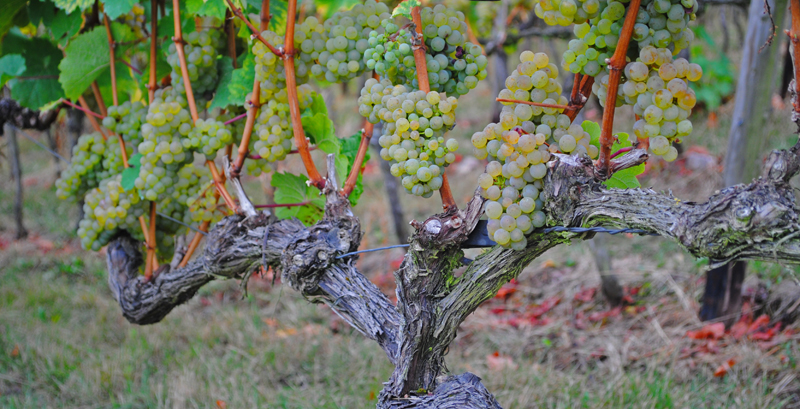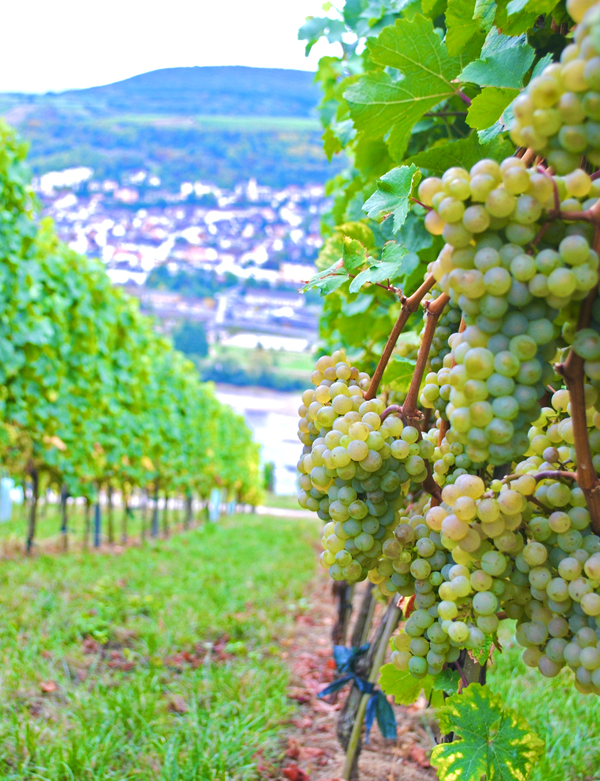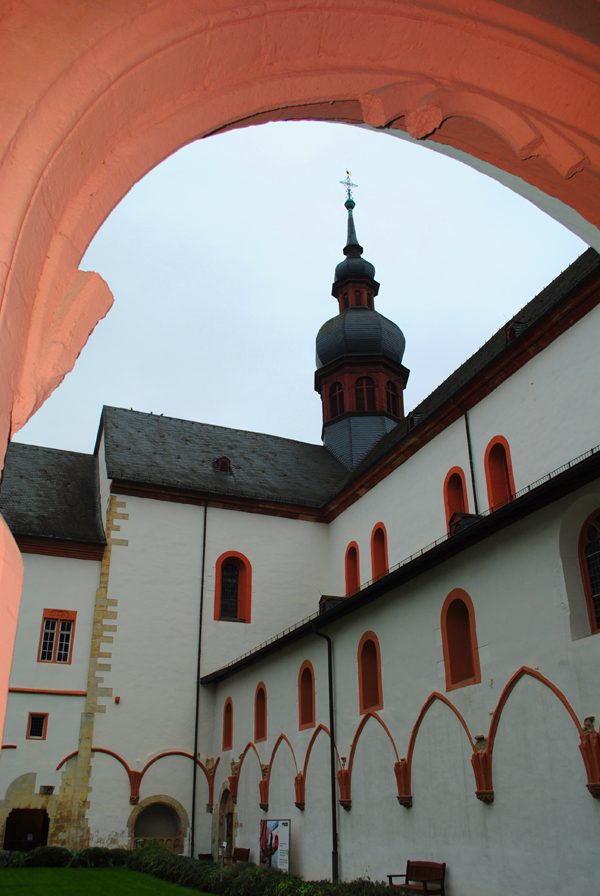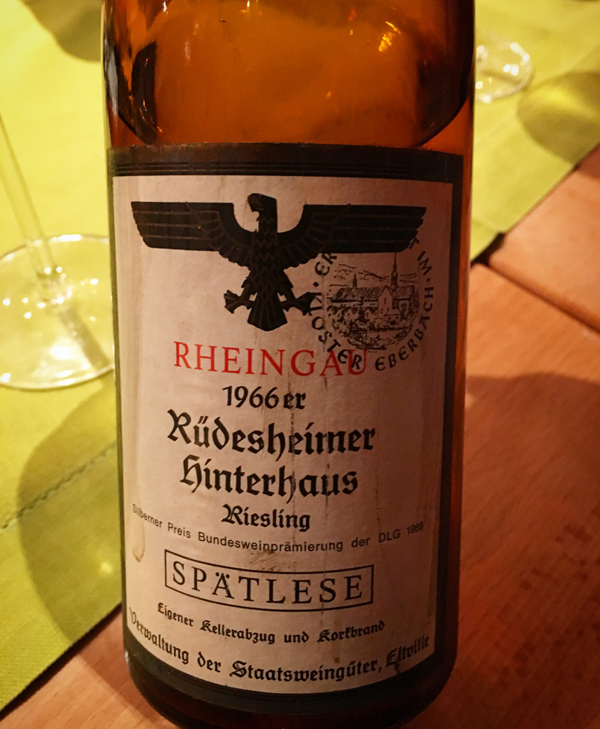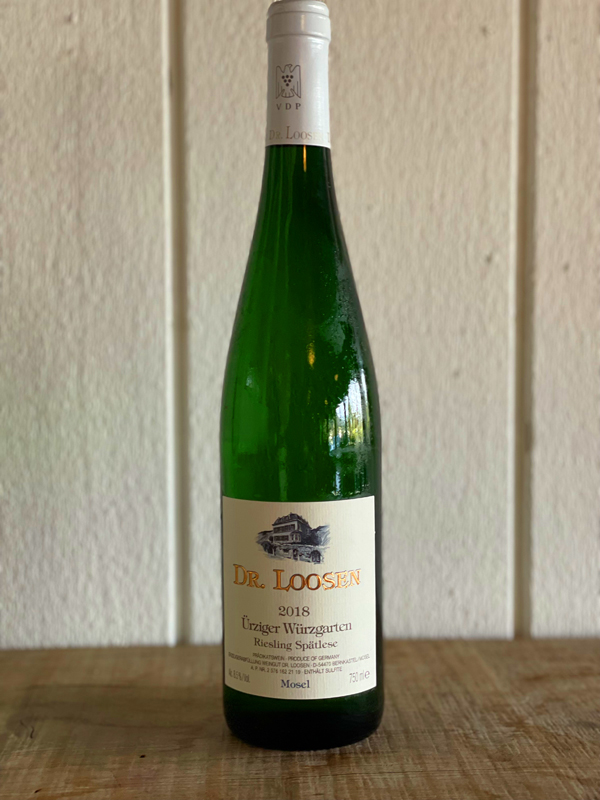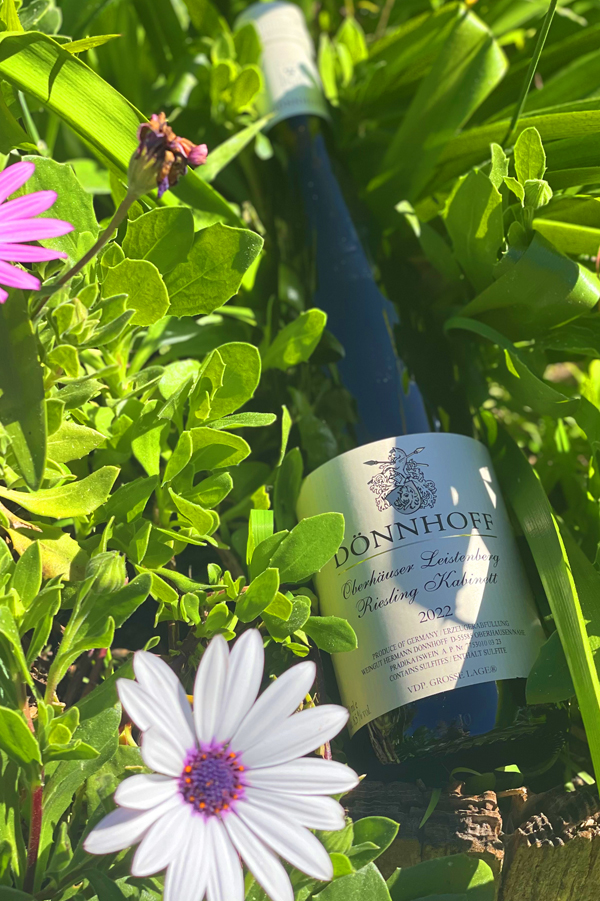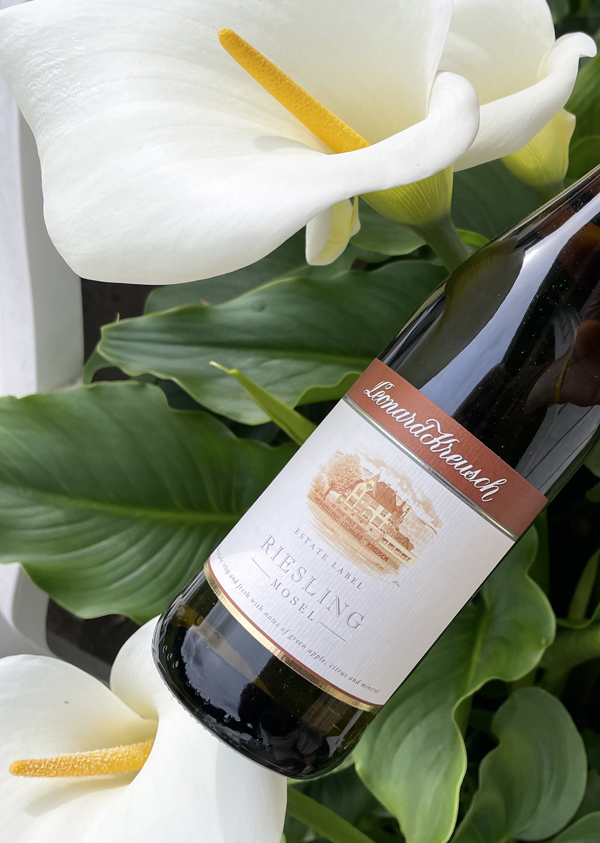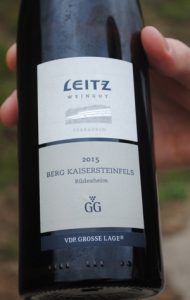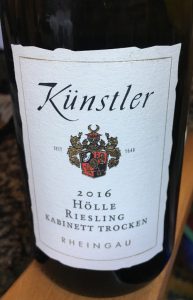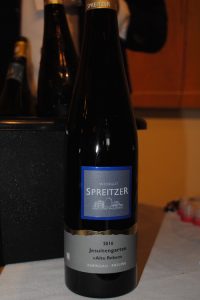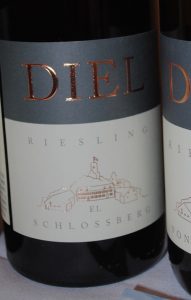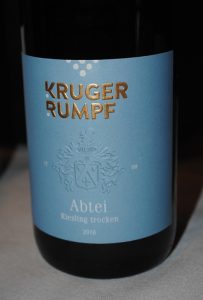By Kerry Winslow, grapelive.com
Happy Birthday Riesling!
The historic Riesling story, as explained to me, begins historically with Count Katzenelnbogen, German wine extraordinaire, logged the first evidence of the Riesling grape near the Rheingau region on March 13, 1435, hence the birthday. One of his administrators bought a new white grape variety from a vineyard in Rüsselsheim for 22 shillings, and it caused a stir, as this grape variety, now know as Riesling, was much better in terms of quality than was typical for the time with its later ripening and its being more resistant to frost, and with a much more expressive aromatically. Thus, the Riesling legend was born and soon it was transported to other parts of Germany, maybe most notably the Mosel where it gained favor with Roman Catholic controlled vineyards in the region.
Also of note, for the birth of Riesling’s fame, Kloster Eberbach, which was founded in 1136 by Bernard of Clairvaux as the first Cistercian monastery on the east bank of the Rhein River, played a big role in bringing attention to the grape. Eberbach, a Cistercian monastery in Eltville in the Rheingau, quickly became one of the largest and most active wine producing monasteries of Germany. Kloster Eberbach today, still producing wine, and with its Romanesque and early Gothic buildings is considered one of the most significant architectural heritage sites in the region, a must visit for German wine and Riesling lovers.
Riesling’s noble past is such that for arguably 200 hundred years it was the greatest white wine in the world, when it was traded for sometimes at astonishing high prices for the times, it was mentioned in historical written records dating back to the 13th century with mentions in Germany and Austria as early as 1232, though it came to prominence between 1570 and 1780. The grape’s current spelling “Riesling” looks to have been established back in 1552, it is likely the name was derived from German words that actually mean poor flowering vine or dark hard wood.
As I’ve noted before, in my own casual research, the Riesling varietal’s origins remain a bit of a mystery, though it is widely believed to have been a native crossing of a German wild grape in the Rheingau, and Traminer as well as Weißer Heunisch a grape that at one time was popular in both France where it was known as Gouais Blanc, though Riesling, that celebrates its 589th birthday on March 13, is supposedly truly indigenous to Germany, even if some in both Austria and Hungary had believed it started there. Interesting there seems to have even been a red skinned Riesling that may have morphed into the white grape, though there is no evidence to support that. It is an aromatic varietal with high acid, which has made it very flexible and intriguing in all of it’s fashionable styles from ridiculously briskly dry to the ultimate Eiswein sweet. Though it must be said it’s most common style throughout it’s early history was Kabinett level, which is slightly sweet or off-dry, in fact Kloster Eberbach’s most prized cellar was their Cabinet room.
Riesling’s first real boom time in planting and popularity came in the 1,800’s with all the main church vineyards were directed to dig up other grapes in favor of Riesling with the main regions of the Rheingau, Rheinhessen and the Mosel all adding large vine holdings of Riesling with the top Benedictine abby’s and monasteries being the main producers, these included what are now Kloster Eberbach, Schloss Johannisberg and Schloss Vollards in the Rheingau, though by this time Trier in the Mosel was also a big player. Riesling’s run at the top of the wine world came crashing down during the first and second World Wars, there were many factors in it’s fall from grace, vineyards in the front lines, changing tastes and economies, so with war and depression things got bleak. When the dust settled and peace breaking out and economic hardships easing, Germany lost it’s groove wine wise, becoming a bulk wine producer ripping up Riesling vines and adding easier growing grapes, while the rest of the Riesling growing areas went quiet as well.
From 1950 to 1970 was the rise of the Blue Nun era (where grapes like Muller Thurgau were heavy used and planted), with the American market buying soft sweet wines that lacked tension or purpose, but the mid to late 70’s saw a return of pride in the German wine industry and Riesling’s fortune started to rise from the ashes. With all levels of sweetness flourishing again, with traditional Kabinett, Spatlese and Auslese wines being the main focus, though we had to wait for another 30 plus years before American’s discovered Germany’s honestly dry wines to become a thing. As of now, there’s significantly more drier German Riesling available and the quality is on par with the absolutely best white wines in the world, there’s never been a better time to explore Riesling.
Latest Riesling Reviews
2018 Dr. Loosen, Riesling Spätlese, Ürziger Würzgarten, Mosel Germany.
Like the Kabinett version, this lush Spatlese, by Dr. Loosen, from the famous Ürziger Würzgatren comes from vines that average well over 60 years old and set on that smoky red slate and red volcanic sandstone that give this wine its iconic terroir distinction. Loosen’s Spätlese is produced with grapes that have a week or two extra hang time, but still without any botrytis, making for a richly flavored, slightly exotic and expressive Riesling with this 2018 starting to gain a rounded maturity and creaminess, but still with freshness and nice acidity holding it together beautifully. There’s brilliant yellow fruit, peach, apricot, lemon curd, pineapple, crisp apple and tangy quince, slate driven mineral tones, a dusting of spices, delicate chamomile, lime flowers, orange sorbet, caramel and wet flint accents. The “Spice Garden” is as Dr. Loosen notes, a blazing red, with a vain of iron rich volcanic soils over weathered slate and insanely steep, the Ürziger Würzgarten Cru vineyard sits the picturesque amphitheater formed by this dramatic bend in the river, forming a natural sun basket that helps ripen the Riesling grapes and gives these wines their signature profile, with some of Dr. Loosen’s oldest vines clinging to this famous hillside. Ürziger Würzgarten’s wines are completely unique, complex and lavishly tropical by nature and Loosen’s example is compelling and tasty, going great with spicy dishes with some heat, ginger beef, Thai curries and super with grilled prawns and or chili crab!
As mentioned many times here, the Weingut Dr. Loosen has been in the same family for over 200 years and with mostly un-grafted old vines that average around 50 years old, in some of the best sites in Mosel, giving Ernst Loosen an awesome selection of grapes to work with. Loosen always seems to produce stunningly intense, world-class wines that not only show terroir, but also a sense of purity wrapped in a luxurious package. With crop yields, according to the winery, almost half of what is permitted by law, only moderate use of organic fertilizers, and old-fashioned cellar practices these wines deliver exceptional quality, quite remarkable for such a large company, showing its commitment and respect for its core mission. The medium sweet Spätlese is made from all sustainable grapes, carefully hand tended and sees a cool fermentation in a combination of stainless steel tanks and traditional Fuder barrels known as Stuckfass. The fermentation stopped by chilling the juice, keeping about 67 grams per liter of residual sugar and finishing up with between 7.5 and 8.5 percent natural alcohol, (8.5% as seen here) in Dr. Loosen’s 2018 version. The Spätlese gets a short period of fine lees contact that adds to the complexity sand depth here, but is bottled fairly quickly to promote vibrancy, clarity and terroir nuance, which adds to the enjoyment of this wine, both young and with some age, as this one shows. I hear the 2022 vintage, which is just coming out now, is one of the best ever Ürziger Würzgarten years, so I’m excited to try it soon, but I highly recommend this classic 2018, which was showing great last night as our tasting group celebrated Riesling’s 589th Birthday.
($35 Est.) 93 Points, grapelive
2022 Weingut Dönnhoff, Riesling Kabinett, Oberhäuser Leistenberg, Nahe, Germany.
The flinty mineral driven and stone fruited slightly off-dry Dönnhoff Oberhäuser Leistenberg Kabinett starts with its usual subtle bouquet of white flowers, steely/flinty tones, faint tropical notes, a hint of earthy/saly brine and clove spice with tangerine, lime, peach and crisp green apple, in a lighter steely framed wonderfully detailed wine. Delicately spicy, floral, with a saline element and a wet shale note, this Kabinett is refreshing and lovely in the glass, as is per normal for a Dönnhoff. Coming from Dönnhoff’s terraced vineyards, with their picturesque steep slopes above the Nahe River this slate driven and distinctive Oberhäuser Leistenberg Kabinett, one of my favorite wines, is an elegant off-dry Riesling, made with expert precision. These carbon-laced decomposed argillaceous slate soils and steep terraced hillsides provide ideal conditions for Riesling, according to the the winery, the cooler afternoon conditions here at the Oberhäuser Leistenberg vineyard allow for long hang times and lower natural alcohol, making for sophisticated versions of this Riesling grape. This is also the original Dönnhoff vineyard site, so for the family it holds a very special place in their hearts, and I can feel the pride in this wine. Made from organic grapes, all grown in this VDP Grosse Lage (Grand Cru) vineyard and certified Fair’n Green, this Riesling, widely admired by the grape’s biggest fans, not just me is pleasing to the palate and made with great respect to the local environment and the planet. The Riesling vines here are old clones sourced from Dönnhoff’s sites in Niederhausen and Schlossböckelheim. As I was reminded of by Wines of Germany USA, who are in full celebration of Rieslings 589th birthday and who gifted me this bottle of the beautiful 2022 vintage to get the word out, knowing I have long been a fan of Riesling and of Dönnhoff, a winery I have been drinking for more than 25 years.
On March 13, 2024 the noble Riesling grape turns 589 years old, but, as Wines of Germany USA says, the variety is fresher and more innovative than ever, especially Rieslings from Cornelius Dönnhoff which are some of the best in the world, from this delicious Oberhäuser Leistenberg Kabinett to majestic collection of dry Grosses Gewachs. From its roots as a sweet wine, fit for kings and queens of Europe, to its modern dry, off-dry and sparkling iterations, again as Wines of Germany USA notes, Riesling doesn’t look a day over 500. Riesling’s story, as explained to me, begins historically with Count Katzenelnbogen, German wine extraordinaire, logged the first evidence of the Riesling grape near the Rheingau region on March 13, 1435, hence the birthday. One of his administrators bought a new white grape variety from a vineyard in Rüsselsheim for 22 shillings, and it caused a stir, as this grape variety, now know as Riesling, was much better in terms of quality than was typical for the time with its later ripening and its being more resistant to frost, and with a much more expressive aromatically. Thus, the Riesling legend was born and soon it was transported to other parts of Germany, maybe most notably the Mosel where it gained favor with Roman Catholic controlled vineyards in the region, while plantings all over flourished as well, as seen in here in the small Name region. The Dönnhoff’s, one of the greatest German winemaking families, first came to the Nahe region over 200 years ago, and after establishing a modest farm, they now have some of the world’s most renown vineyards and make some of the world’s best white wines. Cornelius Dönnhoff’s slate influenced Oberhäuser Leistenberg Kabinett, fermented and matured in stainless steel vats and large Germany oak stuckfass, should not be overlooked in Dönnhoff’s stellar collection of Rieslings, as mentioned many times, it always performs in classic and stylish way with its terroir driven purity in the glass.
($28 Est.) 93 Points, grapelive
2019 Leonard Kreusch, Riesling Feinherb, Estate Label, Mosel, Germany.
As we head towards the Riesling grape’s 589 birthday on March 13, it’s a great time to explore the full range of varietal offers from this noble grape, including the simple pleasure of a regional slightly off dry and fresh version like this one from Leonard Kreusch, a fourth generation producer with a few properties in the Rheinhessen and the Mosel, as seen here. This breezy and fruity Mosel Riesling is nicely balanced and lemon citrusy with crisp acidity, a light mineral tone and a floral bouquet, with enough residual sugar to go with spicy Asian cuisine, but not too much to be overtly sweet. This wine compares well with Dr. Loosen’s “Dr. L” basic regional bottling and is much more fun than the Kim Crawford Sauvignon Blanc and or a generic Pinot Grigio in this price category, this wine would just fine at your local Chinese joint and or Sushi bar. This wine that is sourced from daily steep vineyards that have some red loam/sandstone and Devonian slate soils along the Mosel River, giving this wine a bit more character, wet flinty notes and a ripe peachy note. Produced wholly from the Kreusch family’s Schweicher Annaberg and Schweicher Herrenberg vineyards, both classified back in during thePrussian monarchy in 1868.
The Mosel Riesling by Leonard Kreusch, coming from a selection of estate owned sites, sees a temperature-controlled, cool fermentation in stainless steel tanks using a combination of natural and cultured yeast. After the primary fermentation is complete and first racking process, the winery says, this Riesling remains on the fine lees for a short period of time to gain depth, texture and complexity before bottling. A touch more body and drier than a Kabinett Riesling, the Kreusch Mosel Estate Label comes in at 11% natural alcohol that allows for the zingy vibrant feel and just a touch slight creaminess on the finish. After time in the glass, there’s classic lime, green apple and apricot fruits, along with bitter almond, herb, spice and saline accents that makes this one easy to like. This is a wine that reminds me of what you’d see at most local restaurants in the small villages along Germany’s famous rivers, by the glass or at wine fairs, it won’t blow you away, but nicely refreshing to sip on its own and or with simple foods. Honestly, being a real Riesling enthusiast, I might not search this wine out, but I certainly would love to have this as an option at my Indian bistro instead of some awful boxed wine or sickly sweet Moscato that they seem to think is a good idea to carry. Thanks to Wines of Germany USA for this happy little pale gold and value priced Riesling to start my Riesling celebrations this week!
($14 Est.) 87 Points, grapelive
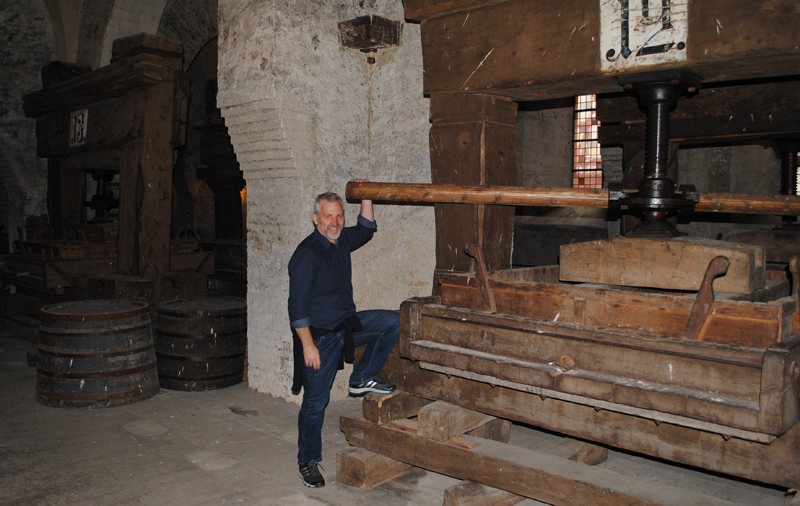
Here are some of my favorite German Rieslings
Weingut Leitz, Riesling Trocken, Rudesheimer Berg Kaisersteinfels, Terrassen, Grosses Gewachs, Rheingau Germany.
The powerful Kaisersteinfels Terrassen Grosses Gewachs dry Riesling from the top of the Rudesheimer Berg, this wondrous wine I believe is the first ever Grand Cru Trocken from this site and is a pure masterpiece in the bottle. Drinking this wine in the vineyard was a magical experience, taking in the beauty and historical landscape while sipping on near perfection is a special moment and this Riesling is more than worthy of my complete admiration, it holds your attention like few wines can and the intensity of terroir cannot be questioned. This Leitz Kaisersteinfels in is league with the great white wines of the world, and it’s glorious liquid stone and steely mineral complexity shines brilliantly, it’s a wine that stands easily with the top Grand Cru whites from Chablis, in fact it reminds me of a Valmur with it’s brisk and flinty natural and laser like focus. (With) The 2015 vintage saw Leitz raising his game to the next level, Johannes’ wines have always stood out in the region and his pursuit of quality is relentless, but these 2015’s are legendary wines throughout his lineup, from top to bottom. The Glorious Rudesheimer Berg Kaisersteinfels Terrassen Grosses Gewachs was just coming out of it’s austere youthful shell when I sampled it, but you knew the second it hits the palate that something remarkable has happened, it is a wine for the ages and certainly needs a bit more time in bottle to fulfill it’s massive potential, though it’s greatness and grace is plain to see already, it comes at you in a rush of vibrant citrus, green apple, white peach and spicy tropical fruits along with wet shale, liquid mineral and saline.
The acidity is eye popping and the extract coats the mouth with high velocity, but with leopard like muscle, graceful and sleek, this is a wine that makes your head spin! The slate driven soils with veins of quartz and wonderful south exposure of the terraces give ripeness, but the cool nights and great airflow up here allow a slow and steady process with a later pick date and heathy grapes without noble rot, and while the Spatlese from Kaisersteinfels is amazing, this Trocken Grand Cru is jaw dropping spectacular and stunning. With air and patience the Kaisersteinfels GG shows savory tones, a hint of leesy richness and a dreamy background of mango, white tea, honeydew, rosewater, kiwi and tangy lime. I waiting a long time to relate my thoughts on this one, in reflection there is transparency and clarity, this is utterly amazing stuff.
Weingut Kunstler, Riesling Kabinett Trocken, Hochheimer Holle, Rheingau Germany.
Gunter Kunstler is one of the greats of dry Riesling and his new Holle Kabinett Trocken, which is really more of a Grosses Gewachs than a Kabinett in the real world, is a lovely delicate vintage, but with fantastic detail and steely character. The Hochheimer Holle Kabinett Trocken Riesling is brightly brilliant with loads of lime, green melon, subtle mango, white peach and tangerine fruits, as well as liquid mineral, almond oil, wet rock, saline, plus a touch of white licorice and basil. More than flavors or words this wine is about feel and class in the glass with it’s electric vibrancy and refined nature, the Kunstler Holle Kabinett Trocken just feels right, start to finish, and it’s still a baby, look for this beautiful Riesling to fill out over the next couple of years and drink well into the next decade.
Grown as organically as possible, the Holle is a humid site and needs lots of care and excels when done with the care that Gunter employs in the cellar, the deep clay and sediments with a bit limestone show through clearly in this vintage, making for a terroir driven white that reminds me of a Premier Cru Chablis in style with it’s pure and soulful expression of place and vitality. Air really allows this Riesling to shine with lingering white cherry, unripe apricot, chalky/stone, rosewater and a faint creamy/leesy note adds to the complexity of this wine that has an icy beauty about it, this really gives you a huge insight into Gunter’s precise clarity of mission, it’s a stunner and because it’s labeled Kabinett Trocken (because of a quirk in the VDP system) it will be flying under the radar, so I encourage you to think of this as a GG at a great price!
Weingut Spreitzer, Riesling Feinherb, Winkeler Jesuitengarten, Alte Reben, Rheingau Germany.
One of the my favorite Rieslings is Spreitzer’s dense Jesuitegarten Alte Reben, think of it as a more generous GG with a touch of off dry lustiness with a rich character and amazing focus! From vines not far from the Rhein on a mix of loess, sand and gravel, the Jesuitegarten benefits from an almost lake effect, since this site sits near the river’s widest point and it vines ripen earlier here, making for opulent Rieslings, but still with vibrant acidity and crystalline mineralite. Less fruity than the Kabinett and Spatlese, the Alte Reben Jesuitegarten feels dry on the palate, but has what I call lush intensity with an almost full body feel, or as Terry Theise says, it’s chewy, and it drinks like a red wine with the massive extract and structure adding a counter weight to the lavish fruit core, regardless of what this wine is labeled, it’s a Grand Cru class white with gorgeous detail and length. This Riesling is beautiful, curvy and tom boy like, just think of Scarlett Johansson in a glass. The Spreitzer Feinherb Jesuitegarten Alte Reben is riveting from start to finish with a heady bouquet of spring flowers, sea shore and citrus which leads to a textured palate of green apple, mango, pineapple, lime sorbet, apricot and white cherry fruits with hints of saline/brine, wet stones, spiced herbal tea, verbena, sweet melon flesh, rosewater and lingering tangerine.
This open and stylish Riesling delivers a rush of elegant pleasure and should go decades, this is super impressive and a value, if you’ve not had Spreitzer in recent vintages you are missing out, my visit to the winery last fall was mind-blowing and while I thought the 2015s raised their game to the next level, the 2016 and later wines, especially 2022s take it even further, Andreas and Bernd are killing it! Imported by Skurnik Wines, new Spreitzers are coming online as I speak, but with the GG’s coming later in the year, these are seriously awesome Rieslings, especially this Jesuitegarten Feinherb, but also look for the dry Rosengarten GG and the Muschelkalk Trocken, as well as the sweeter Kabinett and Spatlese offerings which are classics.
Schlossgut Diel, Riesling Trocken, Dorsheimer Schlossberg, Erstes Lage, Nahe Germany.
Caroline Diel’s Premier Cru Schlossberg dry Riesling is brilliant and clear with liquid mineral and lime blossom leading the way before spicy stony intensity takes over on the vibrant energy filled palate, making for a vivid and pure terroir driven wine. From the slopes of Nahe the Dorsheimer Schlossberg Erstes Lage is a powerful effort, not far off the GG’s in purity and style, fermented spontaneously and in a combination of wood and cement, mostly in stuckfass and with great care and detail focus with studied attention and serve sorting, this wine has vigorous acidity and extract, but showing elegance and lingering beauty, it’s a gorgeous example of briskly cool and bone dry Riesling. Layers of green apple, a core of lime citrus, bitter melon, kumquat, kiwi, verbena, peppered shale, white peach and rosewater all appear in a vital crisp form in this well structured wine. The saline, brine and wet stone elements add complexity to this fabulous Diel Riesling, a leader in graceful dry style wines, and this wine is everything you’d ever want in a racy lean and youthful Riesling.
Drinking well now, the 2016 is a vintage that is expressive and forward, maybe not quite as exotic and concentrated as 2015s. The Diel 1er Schlossberg Trocken is a wine to look for, it’s right up with with GG’s and priced right for the quality and pedigree. So if you get a chance to visit the Nahe, this is a winery to put near to the top of your list of wineries to go to, and if you can’t visit you’ll still want to discover Caroline’s wines, imported by Skurnik Wines. I highly recommend Diel’s dry wines, but do not overlook the Kabinett, Spatlese and even the Auslese all of which are excellent and sexy wines, plus don’t miss their USA only cuvee “Von der Nahe” Feinherb it’s a killer deal and a generous lightly fruity Riesling that feels nicely dry, but with a smooth mouth feel from the sugar level. I was lucky enough to taste and do a quick tour at the winery last fall with Caroline’s husband Sylvain, so it was fun to taste these 2016’s with him at the Skurnik Wines West tasting in San Francisco.
Weingut Kruger-Rumpf, Riesling Trocken, Abtei Erste Gewächs, Binger Brucke Im Ruppertsberg, Germany.
I walked this vineyard at harvest time 2016, the northern most vineyard in the Nahe, which is on the outskirts of Bingen, once an Abbey owned plot, across the Rhein from Rudesheimer Berg with a beautiful south facing it is a steep site that is terrible hard work to farm, so it has become a special place for me and certainly it is a rewarding set of vines for Georg Rumpf. The winery took this vineyard on in recent years and is restoring it after it was neglected for many years, and even in the short time Rumpf has had it the promise of greatness shines through.
This vineyard could be a Grosses Gewachs in the future, and this wine is one to follow, especially now with the price being so reasonable for the quality, and for the difficult hand work this vineyard requires! Farmed organic and on soils that mimic Rudesheimer Berg, this wine has an inner brilliance and powerful energy, it’s an amazing tiny terroir that graces this dry Riesling, giving slate character and remarkable fresh detail. The Abtei starts with orange blossom, flinty mineral/stone essences, vivid stone fruit, white peach and melon fleshiness as well as verbena, rosehip tea, tangerine, green apple and lingering lime and saline infused shale. The palate is forceful and crisp, but still refined and generous at the same time, a trait you find in all of Georg’s wines, especially his dry styles, while his fruitier wines are slightly more flamboyant/sexy they never feel overtly sweet or heavy, I love everything he produces, but this Abtei might be my secret favorite.
*Re-post Article -Updated March 13, 2024
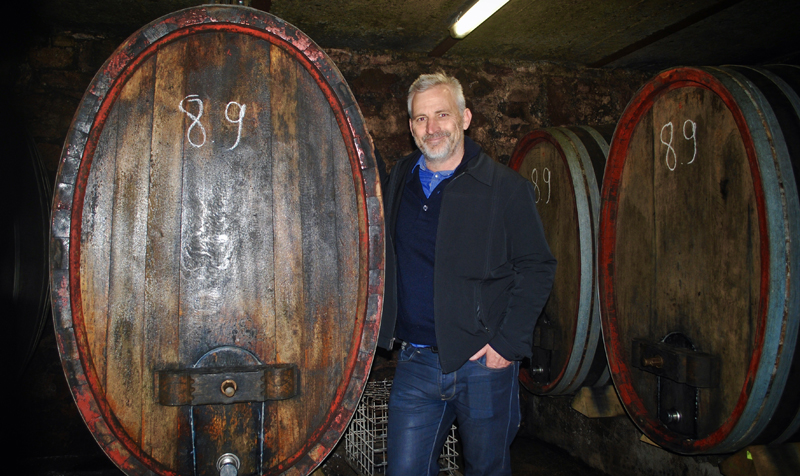
All pictures by Kerry Winslow, grapelive.com
